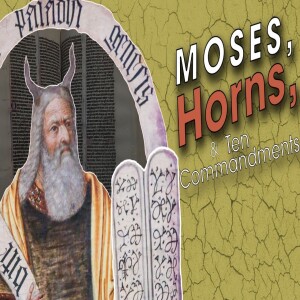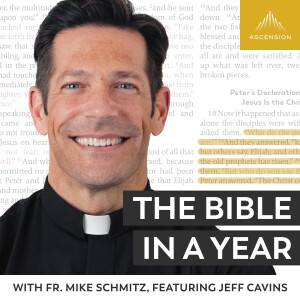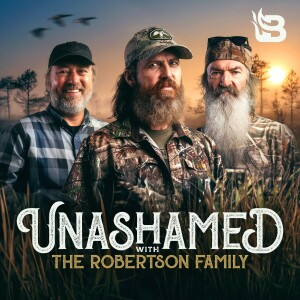

Moses, Horns, and the Ten Commandments
Welcome to Founded in Truth, a community that seeks something bigger than ourselves, a family built on truth and love, where we gather to worship God. Today's message, as introduced by Matthew Vander Els, delves into the fascinating history and profound meaning of the Ten Commandments, or the Ten Words, exploring not just their literal interpretations but also their broader implications for our lives and our community. We will journey through the different ways these commandments have been understood throughout history and consider how they continue to shape our understanding of God and our relationships with one another.
The Ten Commandments: A Journey Through HistoryIt is intriguing to discover that the way the Ten Commandments have been counted and understood has varied across different religious traditions. Judaism, the Catholic and Lutheran traditions, and the Reformed tradition, with which we are largely familiar, have all approached the enumeration of these foundational principles in slightly different ways. This historical variation is both humbling and exciting, prompting us to consider the question, "Which one is right?" However, perhaps the most valuable aspect of this exploration lies not in finding a definitive answer, but in the process of discussion and the journey toward understanding the text together as a community.
This idea resonates with the way Jesus, or Yeshua, often interacted with his disciples and others. Instead of simply declaring himself as the Messiah, he would ask questions, inviting conversation and allowing individuals to arrive at their own understanding. Consider his question to his disciples, "Who do you say I am?" This approach highlights the importance of engaging with the text and with each other, vitalizing the words in our relationships and thinking as a community of followers. Just as Jesus didn't end the conversation with Peter after he began to doubt while walking on water, but instead asked, "Why did you doubt?" we are encouraged to continue the dialogue and exploration of God's word.
Engaging with God: Lessons from Jesus's EncountersThe encounter of Jesus with the invalid at the pool of Bethesda further illustrates his desire for connection and conversation. Jesus could have simply healed the man instantly, but instead, he asked, "Do you want to be healed?" This question wasn't for his own knowledge, but to engage the man, to hear his story, and to make the miracle a part of a relationship rather than just a display of power. The man, who had been disabled for 38 years, a period longer than most people lived at that time, expressed his helplessness and his desire for healing. Jesus's subsequent command, "Get up, take your bed and walk," was preceded by an invitation to connect, emphasizing that it is never too late to have a conversation with Jesus. He asks us similar questions today: "Do you want peace? Do you want to move closer to me? Do you want to enter into life that spans eternity?" These questions are invitations to a deeper relationship with him.
The Radiant Face of Moses: Beyond the HornsOur exploration of biblical history also brings us to the fascinating account of Moses receiving the Ten Commandments. In Exodus 34:29, we read about Moses descending Mount Sinai with the two tablets of stone. A peculiar aspect of this passage involves the translation of the Hebrew word "Quran." When Saint Jerome translated the Bible into Latin, creating the Vulgate, he encountered "Quran" used as a verb to describe Moses' head. While "Quran" as a noun is frequently translated as "horn" throughout the Hebrew Bible, the verb form, used only three times and always concerning Moses' head, was also interpreted as "horned" in the Vulgate.
This translation had a significant impact on how Moses was depicted in Christian art for centuries. For most of Christian history, including during the time Michelangelo was commissioned to sculpt Moses, he was often portrayed with horns. Medieval paintings and sculptures, such as one in the church of Valencia in Spain and a 14th-century sculpture at New College, Oxford, reflect this tradition. However, the noun "charon," meaning horn, is also used metaphorically in the Bible to represent strength or a ray of light. For example, Hannah's prayer in 1 Samuel 2:1 speaks of her "horn" being exalted, signifying her strength. Similarly, in Habakkuk 3:4, God's splendor is described with "rays" or "charon" flashing from his hand.
Understanding this metaphorical use helps us interpret Exodus 34:29 more accurately. Instead of Moses literally having horns, the passage should be understood to mean that the skin of his face was radiant or shining with glory after his encounter with God. This is how modern, responsible translations interpret the text, and it aligns with how New Testament authors, like Paul in 2 Corinthians 3:7, understood it, describing the glory that came forth from Moses' face. This correction in understanding highlights the importance of careful textual analysis and historical context when interpreting the Bible.
For more Bible Teachings, click the link.
Application for Everyday Life- Engage in meaningful conversations about faith: Like Jesus, ask questions and explore biblical truths together with others. Don't be afraid of discussions, even debates, as the journey toward understanding can strengthen relationships.
- Seek a deeper relationship with Jesus through conversation: Take time to talk to Jesus, sharing your needs, desires, and concerns. Just as he asked the invalid, he asks us, "Do you want to be healed? Do you want peace?"
- Look beyond superficial interpretations of scripture: Delve into the historical and cultural context of the Bible to gain a richer understanding. Be open to the possibility that interpretations have evolved over time.
- Honor your parents: Recognize their role as covenant partners and the importance of transmitting faith and wisdom across generations. Show care, respect, and support for them.
- Value and protect human life: Uphold the inherent worth of every individual within your community.
- Cherish the sanctity of marriage: Protect and nurture your own marriage and respect the marriages of others. Recognize the sacred covenant made in that moment.
- Practice honesty and integrity: Let your word be trustworthy and avoid misrepresenting others.
- Cultivate contentment and trust in God's provision: Guard your heart against covetousness and learn to trust in God's care for your life.
- Remember the heart behind the commandments: Strive for inward transformation rather than just outward compliance. Let your motivations be rooted in love for God and neighbor.
- See the law as a means to know God better: Understand that the commandments are not just a list of rules, but a way to understand God's character and live out your purpose in the world.
- Exodus 20:1
- Exodus 34:29
- 1 Samuel 2:1
- Habakkuk 3:4
- 2 Corinthians 3:7
- Bearing God's Name: Why Sinai Still Matters by Carmen Imes
- The Bible by Various Authors
Note: This article contains affiliate links.
More Episodes
All Episodes>>You may also like
Create Your Podcast In Minutes
- Full-featured podcast site
- Unlimited storage and bandwidth
- Comprehensive podcast stats
- Distribute to Apple Podcasts, Spotify, and more
- Make money with your podcast












